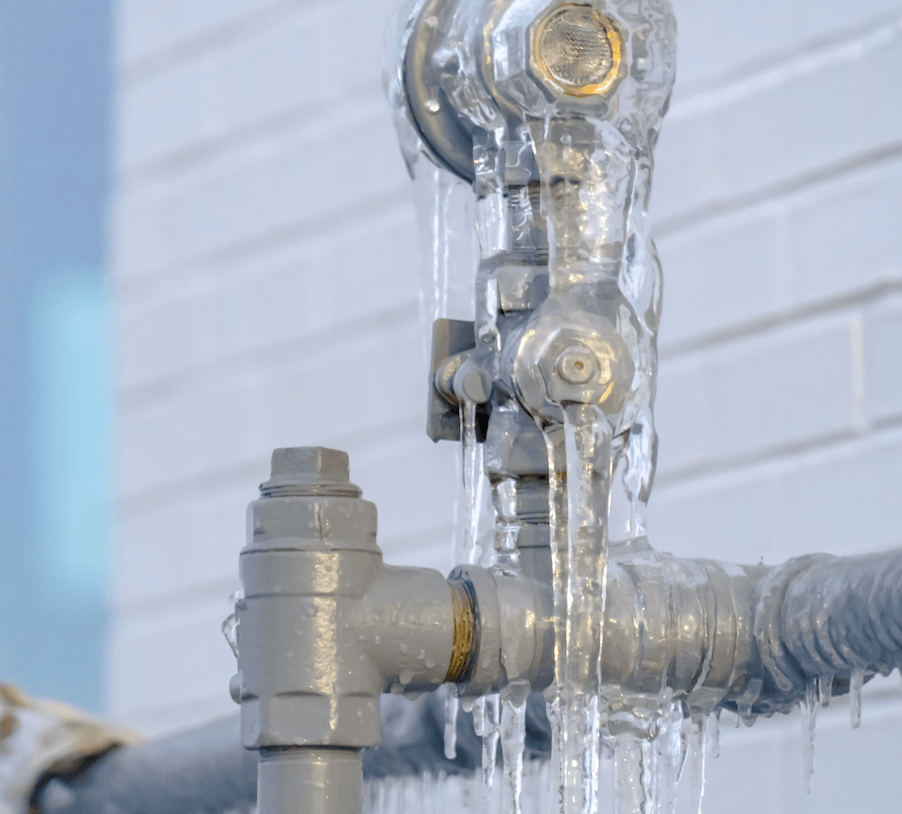Just how do you feel in relation to Winter Plumbing Precautions: Preventing Frozen Pipes?

Cold weather can ruin your plumbing, specifically by freezing pipes. Below's exactly how to avoid it from taking place and what to do if it does.
Intro
As temperatures decline, the risk of icy pipes rises, possibly bring about costly repair work and water damage. Comprehending how to prevent frozen pipes is essential for property owners in cool climates.
Avoidance Tips
Insulating at risk pipelines
Wrap pipelines in insulation sleeves or make use of warmth tape to safeguard them from freezing temperature levels. Focus on pipelines in unheated or exterior locations of the home.
Home heating methods
Maintain interior areas properly warmed, particularly areas with plumbing. Open up cupboard doors to allow cozy air to distribute around pipelines under sinks.
Exactly how to identify icy pipes
Seek reduced water circulation from faucets, uncommon odors or noises from pipelines, and visible frost on revealed pipes.
Long-Term Solutions
Structural changes
Think about rerouting pipes away from exterior wall surfaces or unheated locations. Include extra insulation to attic rooms, basements, and crawl spaces.
Upgrading insulation
Buy top notch insulation for pipes, attics, and wall surfaces. Proper insulation helps preserve regular temperature levels and decreases the danger of icy pipelines.
Shielding Exterior Pipes
Garden pipes and outdoor faucets
Separate and drain pipes yard hoses before winter months. Install frost-proof faucets or cover outdoor faucets with protected caps.
Comprehending Frozen Pipes
What triggers pipelines to ice up?
Pipes ice up when revealed to temperature levels listed below 32 ° F (0 ° C) for extended periods. As water inside the pipelines ices up, it increases, putting pressure on the pipe walls and possibly creating them to break.
Risks and damages
Frozen pipes can result in water system disturbances, residential property damages, and costly repair services. Ruptured pipes can flood homes and cause extensive architectural damages.
Indications of Frozen Pipeline
Identifying icy pipelines early can stop them from breaking.
What to Do If Your Pipes Freeze
Immediate actions to take
If you presume icy pipelines, keep taps open up to ease stress as the ice thaws. Make use of a hairdryer or towels soaked in hot water to thaw pipes gradually.
Conclusion
Stopping frozen pipelines calls for aggressive actions and quick responses. By recognizing the reasons, indicators, and preventive measures, home owners can safeguard their plumbing throughout cold weather.
5 Ways to Prevent Frozen Pipes
Drain Outdoor Faucets and Disconnect Hoses
First, close the shut-off valve that controls the flow of water in the pipe to your outdoor faucet. Then, head outside to disconnect and drain your hose and open the outdoor faucet to allow the water to completely drain out of the line. Turn off the faucet when done. Finally, head back to the shut-off valve and drain the remaining water inside the pipe into a bucket or container. Additionally, if you have a home irrigation system, you should consider hiring an expert to clear the system of water each year.
Insulate Pipes
One of the best and most cost-effective methods for preventing frozen water pipes is to wrap your pipes with insulation. This is especially important for areas in your home that aren’t exposed to heat, such as an attic. We suggest using foam sleeves, which can typically be found at your local hardware store.
Keep Heat Running at 65
Your pipes are located inside your walls, and the temperature there is much colder than the rest of the house. To prevent your pipes from freezing, The Insurance Information Institute suggests that you keep your home heated to at least 65 degrees, even when traveling. You may want to invest in smart devices that can keep an eye on the temperature in your home while you’re away.
Leave Water Dripping
Moving water — even a small trickle — can prevent ice from forming inside your pipes. When freezing temps are imminent, start a drip of water from all faucets that serve exposed pipes. Leaving a few faucets running will also help relieve pressure inside the pipes and help prevent a rupture if the water inside freezes.
Open Cupboard Doors
Warm your kitchen and bathroom pipes by opening cupboards and vanities. You should also leave your interior doors ajar to help warm air circulate evenly throughout your home.

I recently found that post on How To Avoid Freezing Pipes while surfing around the internet. Liked our write up? Please share it. Let others locate it. I value your readership.
At This Website